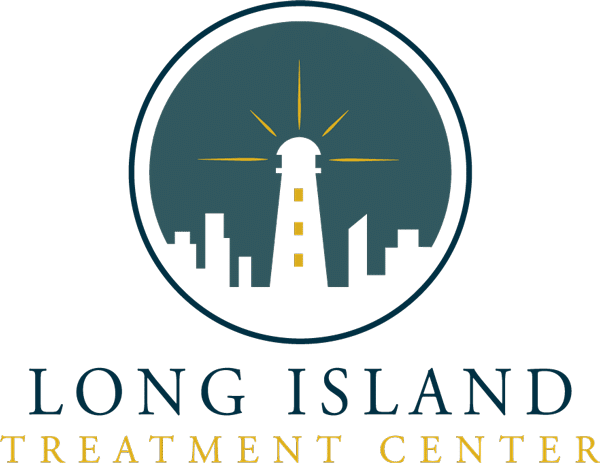One of the most significant initial challenges that addicts face on their path to sobriety is related to cravings and urges. An addiction to opioids and other substances can be strong, and individuals may also experience significant and even painful withdrawal symptoms when they attempt to stop usage. At Long Island Treatment Center, we have successfully supported many people in the New York City area who have been struggling with addiction. Medication-assisted treatment is one option that may be suitable for those with strong addictions.
Table of Contents
What Is Medication-Assisted Treatment?
The cravings that an individual may experience after stopping drug use can be significant, and they often may lead to a relapse even after the full completion of a drug treatment program. In some cases, the cravings may interfere with the treatment process. For example, a patient may not be able to focus on therapy and its benefits when cravings are overwhelmingly powerful. In addition to cravings, a patient going through withdrawal may experience severe anxiety, nausea and vomiting, joint pain, irritability, sweating, insomnia, and other unpleasant symptoms.
The FDA has approved a range of medications that can be used for the treatment of various types of addiction. Some of the medications that may be prescribed by your doctor include buprenorphine, naloxone, methadone, probuphine, disulfiram, naltrexone, and others. Each of these and other medications works differently and produces various results. Because of this, your doctor may prescribe one medication or a combination of medications to address the patient’s specific issues. While these medications may be administered while the patient is in treatment, there are instances when the medications may continue to be prescribed after the initial treatment has ended. In some cases, the patient may continue using these prescribed medications throughout his or her lifetime.
By properly addressing withdrawal symptoms and cravings, these medications may help patients to be more comfortable throughout their treatment and beyond. Keep in mind that medication-assisted treatment also usually includes many of the same additional approaches as residential and outpatient treatments use. For example, the patient’s total treatment plan may also include family therapy, individual therapy, group therapy, education on life skills, and more.

What Are the Benefits of Medication-Assisted Treatment?
It is estimated that several million people currently suffer from the abuse of opioids, and many others are dealing with addictions to other dangerous substances. An addiction may impact a person’s physical, emotional and mental health. These factors affect a person’s ability to work, maintain quality relationships, and more. Medication-assisted treatment in New York offers addicted individuals a safe and effective way to break an addiction.
Medication-assisted treatment also has several other key benefits. For example, it can increase a patient’s odds of survival during this important time and after rehab treatment concludes. Through the use of prescribed medications, an individual may be more likely to get a job and maintain employment for a longer period of time. The risk of a relapse is diminished. Often, criminal activities are associated with drug abuse. The incidents of drug-related criminal activities also diminish with medication-assisted treatment. Hepatitis C and HIV are associated with drug use as well. By decreasing the likelihood of a relapse, medication-assisted treatment reduces the risk of an individual contracting these and other serious diseases. Medication-assisted treatment in New York may be suitable for pregnant women as well. This type of treatment may improve the outcome of pregnancies.
A patient’s comfort during detox and beyond must also be taken into account. Medication-assisted treatment eases symptoms that may otherwise cause a patient to back out of detox. By reducing cravings and related symptoms after detox, medication-assisted treatment may increase the likelihood of a patient completing treatment and extracting optimized benefits from it.
It is important to note that you may come across medication-based treatment as you research the options. People commonly ask about the differences between these two treatments. Medication-assisted treatment may sometimes be referred to as medication-based treatment. While they are the same, you may notice some differences in how these treatments are applied from rehab facility to facility.
How Does Medication-Assisted Treatment Work?
The first step in medication-assisted treatment is to determine if this treatment would be effective for the patient. The substance being abused as well as the severity of the addiction must be taken into consideration. An initial assessment will also identify underlying mental health concerns or other issues that may contribute to the addiction. During the assessment, the patient’s willingness to follow a regimen of prescription medications and his or her desire to remain sober is also considered.
After the initial detox process has been completed, the patient will have access to a variety of services through the Long Island rehab center. These include individual and family counseling as well as art therapy and group treatment. Other services available through the rehab center are educational counseling, vocational counseling, routine and general medical care, and case management. The specific services that you may have access to will vary depending on the facility and program that you select. While medication-assisted treatment may sound like it is primarily rooted in prescription medications, it is important to note that this type of treatment actually takes a whole-body approach. It may be more intensive than traditional outpatient programs.
What Should You Expect After Rehab Treatment?
In many cases, a patient will continue to take their prescribed medications after treatments conclude. However, some of the medications and treatments may be changed from time to time. The patient must work closely with his or her doctor to monitor and adjust the medications as needed for the best results. Depending on the circumstances, these medications may continue to be taken for weeks or even years after completing a treatment program.
In addition to possibly taking medications after the completion of the program, the patient may benefit from various other types of continued care. For example, both relapse restriction programs and evidence-based behavioral treatments have proven to be effective for some patients. Support groups and therapy may also be recommended.

How Do You Select a Rehab Treatment Program?
Through your research, you will undoubtedly discover that there are many types of treatment programs available. These may include inpatient treatment, outpatient treatment, medication-assisted treatment, and more. More than that, the various facilities may provide these treatments somewhat differently. You understandably want to have the greatest opportunity for long-term success, so what should you look for in a rehab program?
Each person has unique factors to consider. These may include the severity of the addiction, exposure to triggers, the need to continue working or caring for family members, concerns about withdrawals, previous attempts to get clean and more. The best way to narrow down the options to a specific type of program is to get a free assessment. From that point, you can compare facilities in Long Island and throughout the New York City area that offer the program you need.
Learn More About Medication-Assisted Treatment Near You
At Long Island Treatment Center, we have been supporting patients in the New York City area on the path toward sobriety for years. There are several treatment options available for you to consider. Each has its unique benefits and features. Our dedicated team at Long Island Treatment Center is committed to helping you achieve your goals. Through a free, personalized assessment, we can prepare a treatment plan that is specifically tailored to suit your needs. Contact our office today to request an assessment and to learn more about medication-assisted treatment.

